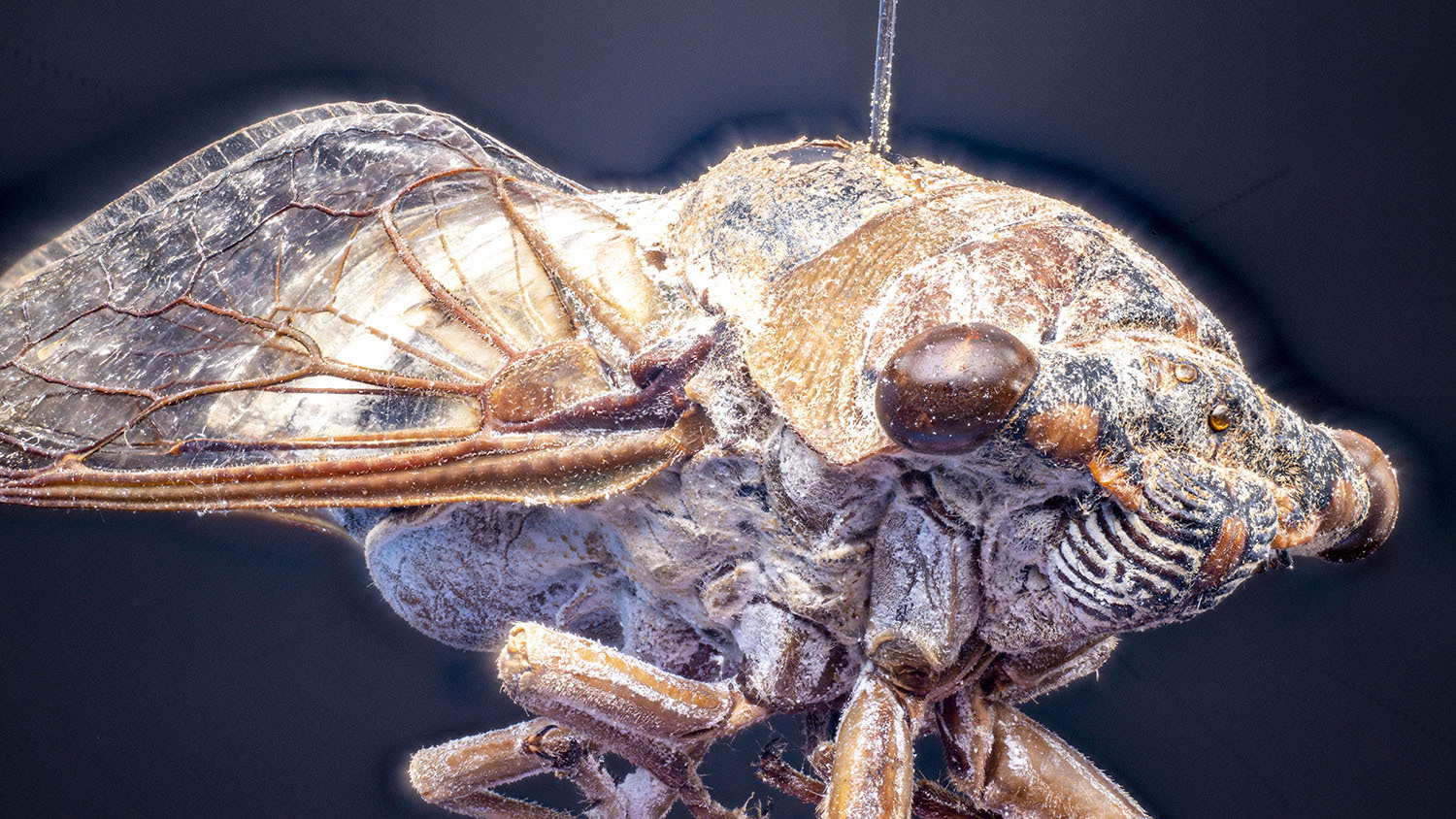Metamorphosis Turns Into An Infestation

Generally speaking, an infestation is not a good thing. However, in Extension Associate Terri Billeisen, Ph.D.’s courses, it is exactly the desired outcome! Billeisen’s DELTA Grant work requesting assistance in creating a redesigned lab component wrapped up in the fall of 2021 and was highlighted in an article called A Metamorphosis: DELTA Grant Transforms ENT 410.
Since then, Billeisen has been relying on her DELTA team composed of Lead Multimedia Designer Rich Gurnsey, Assistant Director of Course Quality Bethanne Winzeler, Multimedia Specialist Stephen Waddell and Immersive Media Producer Rhett Hissam to continue to update their creations. And, the big winners in this project are the students.
A course evaluation comment from one of Billeisen’s students mirrors their feelings. “In the spring of 2021, I saw many in the university’s academic departments see the COVID-driven push towards hybrid and fully virtual learning as an obstacle excusing them from delivering knowledge less effectively than they would have face-to-face. Others, Extension Associate Terri Billeisen most notable among them, saw this challenge as an opportunity to employ cutting edge technologies to teach their students effectively. In ENT 163, Billeisen used Top Hat, Moodle, Virtual Insect Viewer (a digital magnification tool created for a previous DELTA Grant.), multimedia presentations, Google Suite applications and other e-learning tools to make every lecture and lab informative, engaging and enjoyable.”
Billeisen reports that the student feedback has been “overwhelmingly positive,” and student engagement has increased dramatically. She has seen measurable improvements across the board after implementing the new lab components.
“While my personal teaching approach has always focused on improving student engagement and participation, I have found that incorporating these new learning opportunities has taken student participation in the classroom to a whole new level. Students, whether attending virtually or in-person, are asking more thoughtful questions, are more active in classroom activities and are contributing more at the individual level in classroom discussions. I can see the results of this increased engagement reflected in the quality of their responses on quizzes and exams. Long answer responses are more detailed, explanatory and consider way beyond the scope of the question. Students are making better linkages between different modules in the course and are able to explain how small details can relate to a much larger overall picture,” says Billeisen.
Existing and Updated Lab Components
The grant work completed in 2021 allows students to examine 3D interactive models of insects to get a much clearer picture of the tiny parts of these bugs. Previous approaches to the course required in-person examinations of insect specimens to observe external features (mouthparts, antennae, legs, etc.) and understand how they impact insect survival, biology and behavior. With the development of tools like the Insect Virtual Viewer, students can examine incredibly detailed pictures and 3D models of insects through a virtual platform, which allows students to access engaging learning materials from anywhere.
Mole Cricket by NCState_DELTA on Sketchfab.
Stephen Waddell created a 3D model of a mole cricket, among other insects, in Sketchfab using approximately 3200 images.
“With this tool, you can zoom in on these high-resolution photos [and 3D models] and examine the different parts of insects. That really helps replicate the experience of examining an actual physical insect specimen, and it’s even better because students aren’t going to break off any legs, the specimens won’t degrade over time, and users can perhaps see even more detail than you would with a physical specimen,” Gurnsey explains.
Billeisen had been using a dichotomous key document for this lab but wanted to update it with something interactive. Gurnsey and Winzeler stepped in to help her make this wish a reality.
“The new dichotomous key was recreated using the H5P branching scenario which allows students to select choices in order to identify the species and order of an insect,” explains Winzeler.
Takeaways and Recommendations
Billeisen admits to investing a lot of time to work through this project with DELTA. However, she believes the benefits of this work far outweigh any additional effort she exerted. She says the new teaching tools “made the transition from in-person to virtual so easy,” and it is something that can be accomplished at a moment’s notice. She has been able to customize the delivery of her courses so that students who find themselves suddenly quarantining can join online and participate in the same activities and discussions as the students sitting in class. Students at home don’t feel alienated, and she says this has been the most invaluable part of the process.
“I am so happy with how the course functions and am still overwhelmed with all of the work that the entire DELTA team accomplished. I would encourage any and all instructors to consider taking part in this experience because it has completely revitalized my approach to teaching,” explains Billeisen.
This project also impacted Billeisen’s overall instructional mindset. She shares that she is “constantly thinking of ways to add to the newly developed content” and will continue to add to her current courses. Her goal is to offer distance education courses with these learning materials and reach as many students as possible.
If you would like to improve student engagement and success in your course, you may apply for a DELTA Grant. Look for proposal submission info soon.


